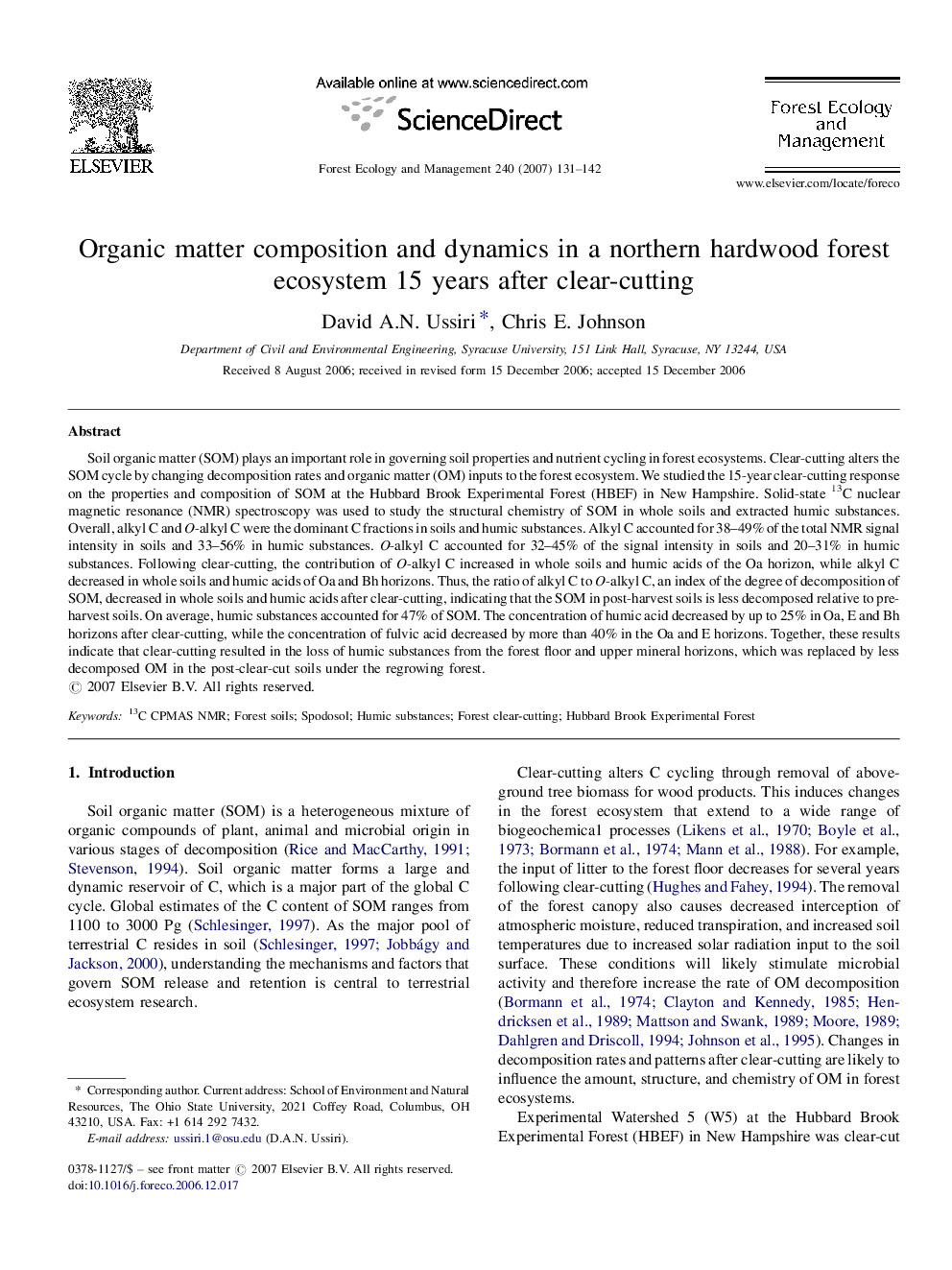| Article ID | Journal | Published Year | Pages | File Type |
|---|---|---|---|---|
| 89723 | Forest Ecology and Management | 2007 | 12 Pages |
Soil organic matter (SOM) plays an important role in governing soil properties and nutrient cycling in forest ecosystems. Clear-cutting alters the SOM cycle by changing decomposition rates and organic matter (OM) inputs to the forest ecosystem. We studied the 15-year clear-cutting response on the properties and composition of SOM at the Hubbard Brook Experimental Forest (HBEF) in New Hampshire. Solid-state 13C nuclear magnetic resonance (NMR) spectroscopy was used to study the structural chemistry of SOM in whole soils and extracted humic substances. Overall, alkyl C and O-alkyl C were the dominant C fractions in soils and humic substances. Alkyl C accounted for 38–49% of the total NMR signal intensity in soils and 33–56% in humic substances. O-alkyl C accounted for 32–45% of the signal intensity in soils and 20–31% in humic substances. Following clear-cutting, the contribution of O-alkyl C increased in whole soils and humic acids of the Oa horizon, while alkyl C decreased in whole soils and humic acids of Oa and Bh horizons. Thus, the ratio of alkyl C to O-alkyl C, an index of the degree of decomposition of SOM, decreased in whole soils and humic acids after clear-cutting, indicating that the SOM in post-harvest soils is less decomposed relative to pre-harvest soils. On average, humic substances accounted for 47% of SOM. The concentration of humic acid decreased by up to 25% in Oa, E and Bh horizons after clear-cutting, while the concentration of fulvic acid decreased by more than 40% in the Oa and E horizons. Together, these results indicate that clear-cutting resulted in the loss of humic substances from the forest floor and upper mineral horizons, which was replaced by less decomposed OM in the post-clear-cut soils under the regrowing forest.
